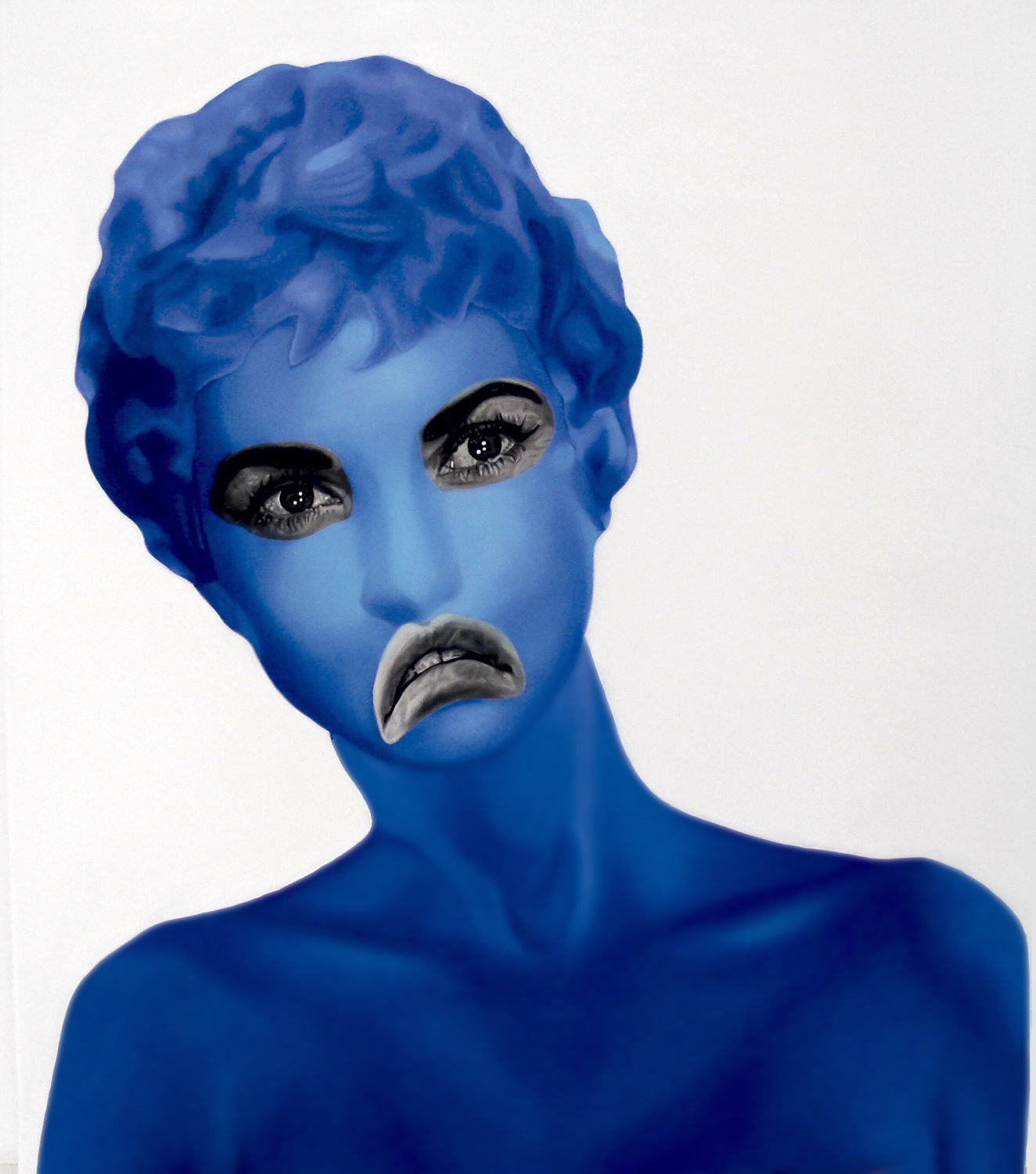Artist Teiji Hayama Reflects on FAME

Born on the Island of Kyushu and having grown up in a family of artists, Teiji Hayama went on to study at Central Saint Martins College of Art & Design, where he first began painting. Inspired by both Greek Mythology and Japanese Pop Culture, he has gained recognition for his oil paintings of milky-skinned nymphs with powerful gazes. Having highlighted the social and psychological changes of young women, the artist focused his last series, FAME, on the question of celebrity in our digital era.
Throughout 17 paintings, Hayama examines the meaning of glory in the age of social media, using portraits of celebrities that he distorts by adorning them with a new pair of eyes or lips. His notorious figures are not chosen by chance, David Bowie, Marylin Monroe and Elisabeth Taylor represent, for the artist, icons of a generation that are immediately identifiable. The artist explains how he takes great interest in the process through which a person becomes famous, the balance between hard work and social presence exemplified by Elvis Presley and Andy Warhol. The latter is one of the artist’s favourite figures for his exploration of the link between the culture of celebrity and artistic expression.
His paintings reflect celebrities in the modern age and the feeling of exhaustion that emerges from the attempt to maintain an ideal digital identity. This obsession with glory was accentuated with the advent of social media, through which we see the proliferation of images. According to the artist, the notion of celebrity has been totally reinvented by social media which has allowed the emergence of public personalities who would otherwise remain anonymous. To be famous is no longer reserved to actors, singers or politicians. Everyone can become a superstar. Warhol had said it himself, in the future, everyone will have their fifteen minutes of fame. Could fame be on its way for Hayama too? His exhibition of the FAME series in London has certainly increased his notoriety.




TRENDING
-
The Tattoos that Marked the Criminals of the Edo Period
Traditional tattoos were strong signifiers; murderers had head tattoos, while theft might result in an arm tattoo.

-
Paris, Tokyo: Robert Compagnon
With his co-chef and talented wife, Jessica Yang, Robert Compagnon opened one of the top new restaurants in Paris: Le Rigmarole.
 3:31
3:31 -
Chiharu Shiota, Red Threads of the Soul
Last year, more than 660,000 people visited the retrospective 'Chiharu Shiota: The Soul Trembles' exhibit at the Mori Art Museum.

-
‘Before Doubting Others, Doubt Yourself. Who Can Truly Say a Dish Isn’t What It Used to Be?’
In ‘A Non-Conformist’s Guide to Surviving Society’, author Satoshi Ogawa shares his strategies for navigating everyday life.

-
The Story of Sada Yacco, the Geisha who Bewitched Europe
Described by Dazed magazine as the first beauty influencer, she has been restored to her former glory since 2019.





